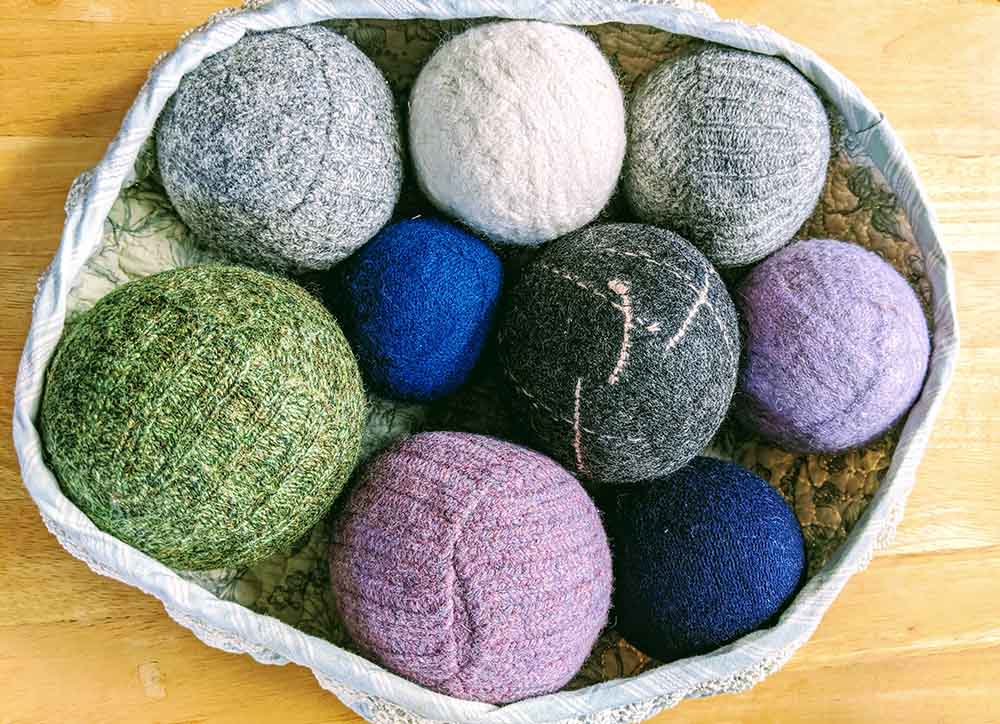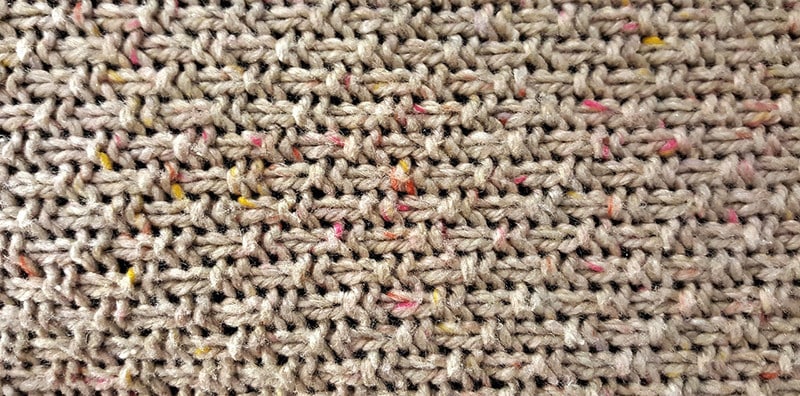What Materials Shrink in the Dryer? 10 Types & Prevention Tips
-
Pete Ortiz
- Last updated:

Have you experienced the unfortunate incident where you find that some of your clothes shrink after pulling them from the dryer? You’re not alone.
Shrinkage is a common problem caused by the dryer’s high temperature and tumbling motion. Some materials may shrink more than others. There isn’t much you can do to prevent it, but prior knowledge of which fabric is more vulnerable to shrinking helps you when sorting out your laundry.
This guide offers insights into the materials that shrink in the dryer and how to handle them to prevent shrinking1 or minimize it.
The 10 Types of Materials Prone to Shrinking in the Dryer
It’s worth noting that natural materials emanating from plants and animal products including wool, cotton, linen, and silk, are more prone to shrinking. Synthetic fibers such as acrylic, acetone, and polyester can withstand higher temperatures and the effects of tumbling, making them more shrink-resistant. Overall, the following are some of the materials that shrink in the dryer:
1. Cotton

Cotton is one of the most used natural fabrics in manufacturing garments. However, clothes made from cotton are the most vulnerable to shrinkage, especially when exposed to high temperatures.
The production of cotton garments involves applying sufficient tension to match the cloth’s size. Exposing the cotton garment to heat releases the pressure making the cotton fiber return to its original size.
You can minimize shrinkage of cotton attires by resorting to hand washing whenever you can or using cold water in the washing machine. It’s also advisable to avoid using the dryer and instead resort to air-drying. Always use delicate, low heat or gentle cycles if you must use a dryer.
It’s also important to pay attention to the cotton blend making the garment, as some blends are safer for drying than others. Here’s a summary to help you:
- Poly/cotton: It’s safe for medium to high heat drying. However, temperatures should not exceed 175°F.
- Rayon/cotton: Air-dry only.
- Tri-blend: You can use low to medium heat, but the maximum temperature should be 150°F.
2. Wool

Wool is a popular natural fabric fiber from goats and sheep and a top choice for comfort and structure thanks to its warmth and durability. It’s the most sought-after fabric for making sweaters, coats, and blankets. While it is a cozy and almost indestructible natural fabric, it’s vulnerable to shrinkage.
It can’t withstand temperatures above 40°F. Your woolen garment will shrink if exposed to hot water or high temperatures in the dryer.
So, how should you handle your beloved woolen garment? The best option is to hand wash or dry clean your woolen garments.
3. Silk

Silk takes the day when it comes to expressing opulence and extravagance. It’s the ideal option for a negligee, but it can manufacture pants, pillowcases, and several other items. However, silk is a delicate material that shouldn’t be exposed to high temperatures exceeding 130°F.
Silk is a natural material extracted from protein fibers. This fabric can shrink within 5 minutes of exposure to high temperatures.
It would be best if you hand wash all your silk garments and air dry them. The heat causes shrinkage, while the intense tumbling motion in the dryer can tear, rip off, and destroy your luxurious clothes.
4. Linen

You probably have linen items stocked in your house. This natural fabric is used to manufacture washable household materials, including tablecloths, sheets, and reusable napkins. It’s also used for embroidered embellishments and clothing.
Linen is crafted from the flax plant, and it can’t withstand high temperatures. Most linen fabrics can withstand moderate temperatures of up to 105°F.
It would be best to refrain from using the dryer for your linen garments. Hand wash your linen fabrics and use cold water whenever using washing machines. You may also opt for dry-cleaning to avoid shrinking.
5. Hemp

Several garments are manufactured from hemp. Individuals love hemp clothing for its comfort, breathability, durability, and being environmentally friendly.
So, does hemp, with all these qualities shrink? Yes, hemp is a natural fabric, and, as mentioned earlier, natural fabrics can’t usually withstand high temperatures. Avoid exposing hemp garments to temperatures exceeding 125°F.
Hand washing is the best method for cleaning hemp garments. You can also cold wash using a washing machine using a delicate or low-heat option for the dryer cycle.
6. Spandex

Spandex is an exceptional synthetic fiber because it can’t withstand high temperatures in the dryer without shrinking. Avoid cleaning garments with a high spandex percentage using a dryer.
High temperatures of over 150°F combined with intense tumbling motion weaken spandex garments, causing them to break and shrink. Such wear and tear cause the fabric to become too tight or develop holes after cleaning them in a dry cycle.
Hand wash spandex clothes in lukewarm or cold water and let them air dry.
7. Cashmere

Cashmere resembles wool in texture and comfort. However, it has a fine texture and is tremendously lightweight, making garments manufactured from the fabric a perfect choice for summer.
This material, however, shouldn’t be exposed to the heat and tumbling in a dryer like its cousin, wool. Temperatures of over 70°F damage the fibers and cause cashmere to wear out.
8. Denim

The popularity of denim has increased recently in the fashion industry. However, it’s worth noting that denim shrinks if you expose it to temperatures over 90°F.
Denim is manufactured mainly from cotton, and the same rules apply when cleaning such garments. Use cold water in your washing machine or resort to hand washing. Air dry your garments or use the low-heat or delicate settings to prevent shrinkage.
9. Rayon

Do you adore silk but are hesitant to get it because of the price tag and delicacy? Rayon is for you. Rayon can also substitute cotton, wool, and linen items. You probably have many garments manufactured from rayon in your closet.
So, is rayon resistant to shrinking? No. It’s worth noting that rayon can’t withstand heat over 80°F. It is made from natural wood fibers that have undergone rigorous manufacturing, allowing it to imitate the tenacity of fabrics such as linen and silk.
However, the manufacturing process doesn’t incorporate rayon with added strength to resist shrinking. Hand wash your rayon garments or use cold water for washing machines to prevent shrinking.
10. Polyester

Polyester is a synthetic fabric that’s more heat and shrink-resistant than most natural fabrics. It can withstand high temperatures of up to 175°F, so it would help if you were cautious not to expose your polyester garments to extreme temperatures.
It’s advisable to wash the garments using cold water and tumble dry before removing the garments as soon as they are dry. You may also set the dryer at a lower heat setting.
How Can I Avoid Shrinkage From My Dryer?
You can use different ways to prevent garments from shrinking in the dryer. The most recommended method is to air dry clothes as often as you can. You may also set your dryer to low heat if you can’t air dry them.
Almost every garment comes with a label listing the directions for care. Follow this label to avoid damaging your clothes. You can also purchase anti-shrink or pre-shrunk garments. These garments are designed to resist further damage and shrinking, and you can expose them to high heat.
Frequently Asked Questions
- Does nylon shrink in the dryer? – No. Nylon is a tough, shrink-resistant fiber, and you can put it in the dryer. However, it’s advisable to use low to medium heat as high temperatures may melt or stretch it.
- Which fabric should I never put in a dryer cleaner? – Some fabrics shouldn’t go to the dryer because of their vulnerability to shrinking when exposed to high temperatures and intense tumbling. These fabrics include wool jumpers, silk garments, knitted fabrics, leather, and bras.
- Does cold water shrink clothes? – Cold water doesn’t shrink clothes, but warm water does result in shrinking. The heat in warm water causes the fabric to expand, creating pressure that results in a microscopic tear. Washing your garments in cold water prevents this problem.
- Does ironing help to reduce shrinking? – Ironing doesn’t unshrink fabric, but an iron’s steam does the trick. Set your iron to low heat to restore your fabric’s original size. The resultant steam loosens the fibers, restoring their previous length and softness.
- Related Read: How to Get Ink Out of a Dryer in 7 Simple Steps
Featured Image Credit: Evgeny Atamanenko, Shutterstock
Contents


